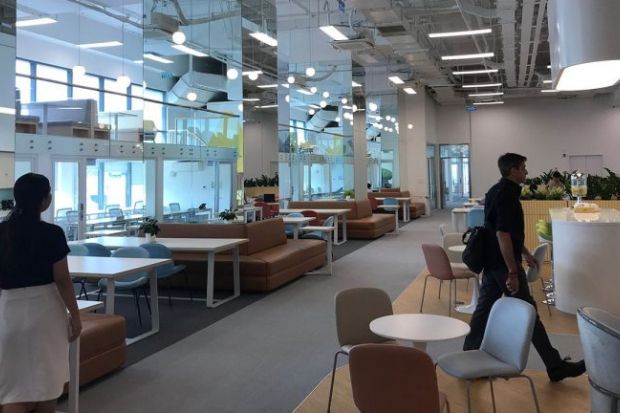With it looking likely that most foreign students will have to wait until mid-2022 to enter Australia or New Zealand, institutions in those two countries are attempting to limit the fallout.
Many are making use of their current Asia operations, while others are opening new Asian “hubs” to engage those who are stuck with remote online learning – and, hopefully, prevent a further slide in international enrolments.
In July, the University of Auckland and the Lightpath Consulting Group opened a Vietnam Study Hub in Ho Chi Minh City. Like many such hubs, it offers more than just a quiet space and internet connectivity – although those facilities are vital in developing countries. It also tries to provide the types of support usually found on campus, such as tutoring, workshops and employment services.
Quan Dang, regional manager (South-east Asia) for the University of Auckland’s international office, told Times Higher Education that the hub’s social aspect was also important: “It is a dedicated place for students to meet with their peers, study together and get learning and career support.”
There are about 2,500 Vietnamese students enrolled in New Zealand and about 25,000 in Australia.
Still, that is only a small slice of the sector in Australia, where there are 172,000 foreign HE students and another 135,000 stranded overseas. International students, who largely come from China and India, earned Australian universities almost A$10 billion (£5.3 billion) in 2019.
A University of Sydney (USyd) spokesperson told THE that “we remain very concerned about the impact of the pandemic on the sector and our students”, adding that they were “pleased” with government backing for plans to return at least smaller numbers of students.
Australian representative groups met in late July to come up with a plan to “restart” the lucrative industry, possibly through chartered flights and vaccine passports.
But, for now, the best they can do is try to operate remotely overseas.
In March, the state of Victoria opened a Study Melbourne Hub in Shanghai for both enrolled and prospective students. There are plans to expand the hubs later to Ho Chi Minh City, Bangalore in India and Kuala Lumpur in Malaysia.
Two institutions, Monash University and USyd, had a head start with existing centres in China.
Monash became the first Australian university to open a joint campus in China in 2013, in partnership with Southeast University. Students are already enrolled at Monash-Suzhou for admission in October 2021, which will allow them to “fast track” their studies before the Australian school year starts in March 2022.
USyd’s centre in Suzhou, which opened in 2016, took on a greater role after Covid by providing Chinese students with administrative support, study sessions, workshops and cultural activities, plus corporate and job-hunting help.
And other universities started expanding into China last year, after borders closed.
In late 2020, the University of New South Wales (UNSW) opened a China Learning Centre in partnership with a tech park in Jiangsu province. The Australian National University (ANU) did the same with a Shanghai Study Hub, while the University of Technology Sydney (UTS) has offshore learning centres in China, Vietnam and Indonesia.
A July survey by the IDP consultancy shows that about a third of the international cohort in Australia (37 per cent) and more than half in New Zealand (59 per cent) want to defer their studies if face-to-face teaching cannot be provided. That is a higher proportion compared with Canada (23 per cent) and the UK (26 per cent), whose borders are more open.





